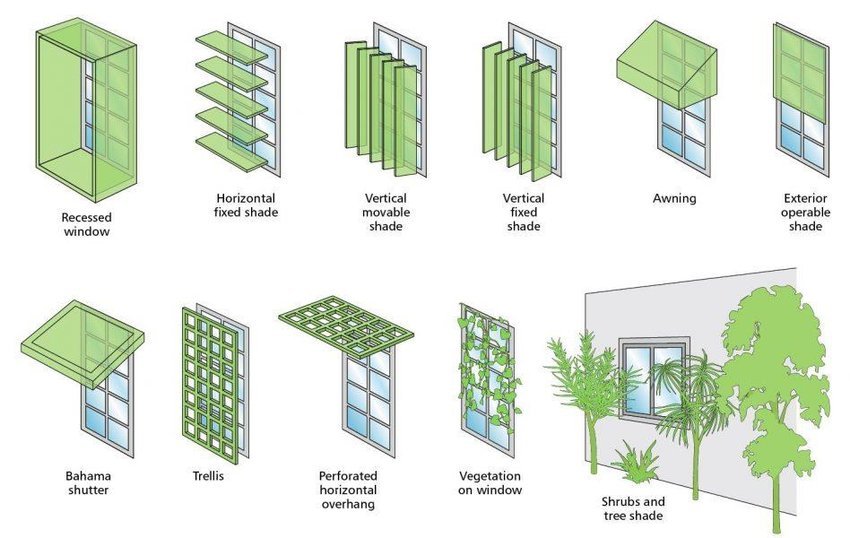In Praise of Shadows
With the onset of the summer heat, our casual reliance on air conditioners returns along with the quiet acceptance of the cost to run them. This begs the question of how we can better prepare ourselves for hotter longer summers?
It wouldn’t be an exaggeration to say that air conditioning has significantly shaped our modern world and will continue to do so, especially in an unprecedented climate future. Nevertheless, air conditioning not only proves to be expensive but also poses serious environmental concerns, accounting for a staggering 10% of global energy consumption. The current scale of air conditioning usage is no longer sustainable, given the drastic increase in the population’s access to this technology compared to a century ago. Moreover, the reliance on environmentally harmful cooling systems exacerbates climate change, creating a self-deprecating cycle. In our quest for cool homes and businesses, we inadvertently contribute to further heating the planet. However, this doesn’t imply that we must endure sweltering conditions. Instead, we can collectively take conscious steps towards cooling our spaces using efficient, low-energy consuming methods.
The cost of running air conditioners both financially and environmentally is only going to continue to increase. This issue of how inefficient and environmentally detrimental air conditioning on its own is so severe that local and federal governments have started to introduce laws to stymie its continued use. New York City for example in April of 2023 introduced a new local law to try and improve the efficacy of the cooling technologies incorporated into buildings. LL 51/23 says that any major upgrades to an existing buildings cooling system has to be coupled with a reduction of energy use by at least 10%. This goal can be easily be met by also integrating simple but highly effective shading systems, that were discarded with the advent of air conditioning.
Summer In New York - 1930 - Wendell MacRae
Examples of External Shading Devices
Sun Control - 101
Shading devices, when carefully designed, will provide shade in the summer months while allowing the sun and it’s warmth into a space in the winter. Incorporating such devices not only improves the comfort of an interior space but saves on heating and cooling costs. If architects begin to consider these shading elements as part of the design challenge, it provides an opportunity to create a visually interesting façade that doubles as a low carbon strategy for heating and cooling.
St. John’s Place
At St. John’s Place, concepts of daylight design were used to develop the balconies and sunshades on the rear façade. The balconies not only added value by providing desirable exterior space for each apartment but also provided necessary shading for the summer months. An energy analysis allowed the careful calibration between the large south facing windows and the necessary solar shading required to reduce heat gain, provide interior comfort and achieve the Passive House standard. The balconies were also designed as free-standing structures to prevent a thermal bridge to the main building. Cables were added to the rear facade to allow occupants to add vines and climbing plants to provide additional shade and greenery to their own spaces.
Sunshades at St. John’s Place
Flow Chelsea
At Flow Chelsea using iterative daylighting / solar analysis and 3D energy modeling, we designed a sunshade device for the South façade windows which will help reduce solar heat gain in the summer months and coupled this with solar shades on the interior for further reduction to the heat load. The design of the sunshades was a balancing act of providing the largest window possible to capture downtown Manhattan views while providing a minimal and elegant shade to reduce heat gain.
Window Mock up at Chelsea Flow







